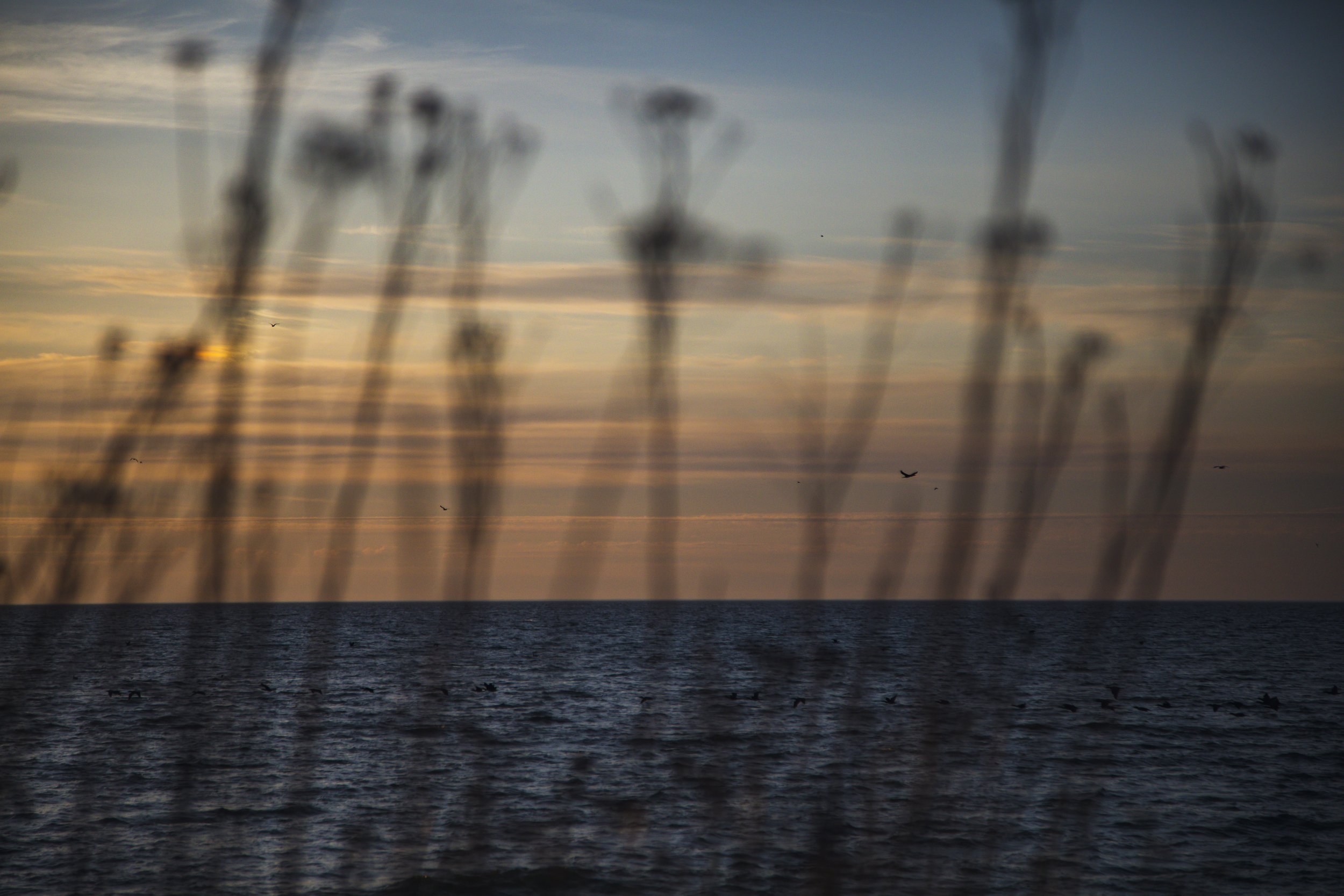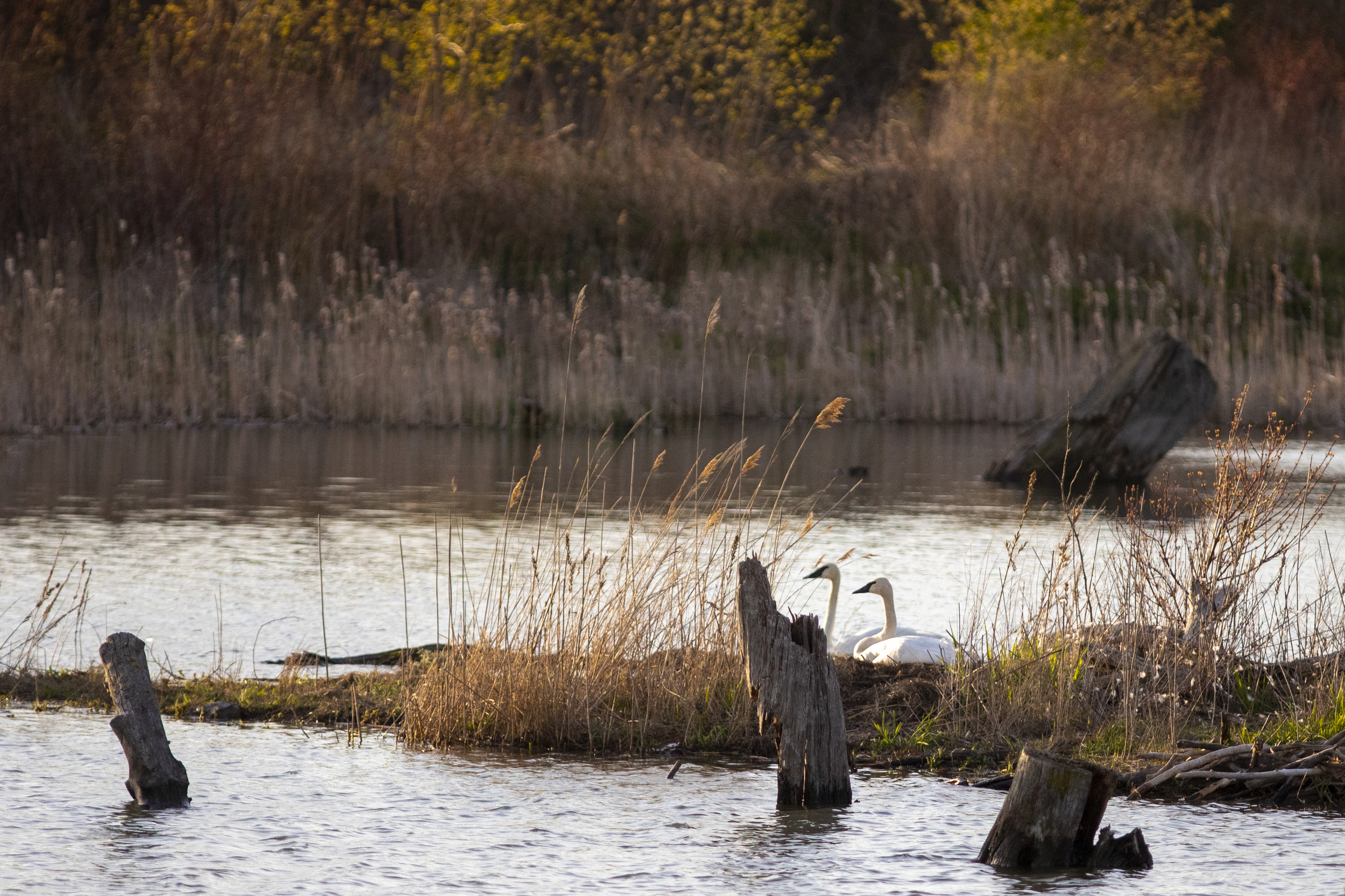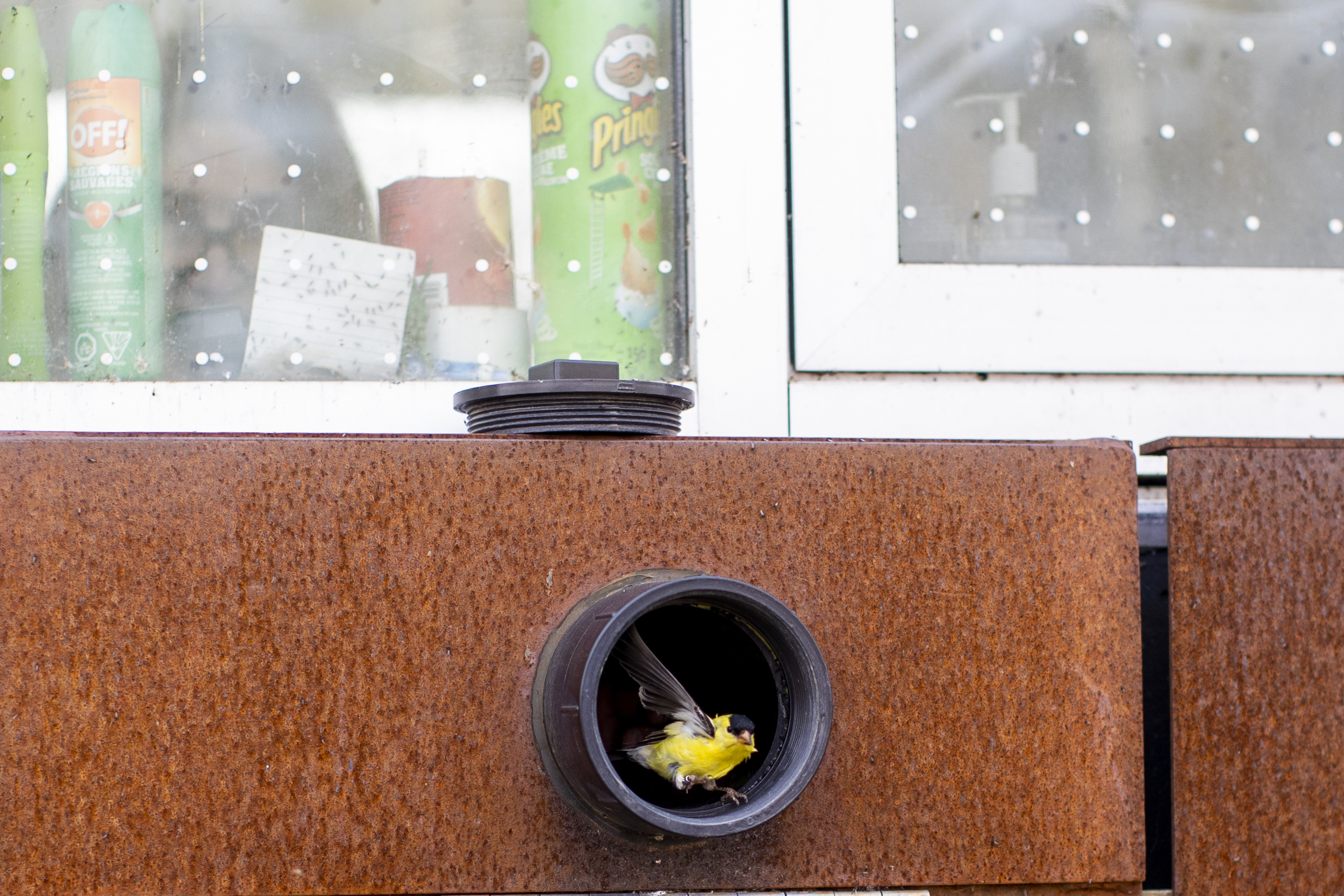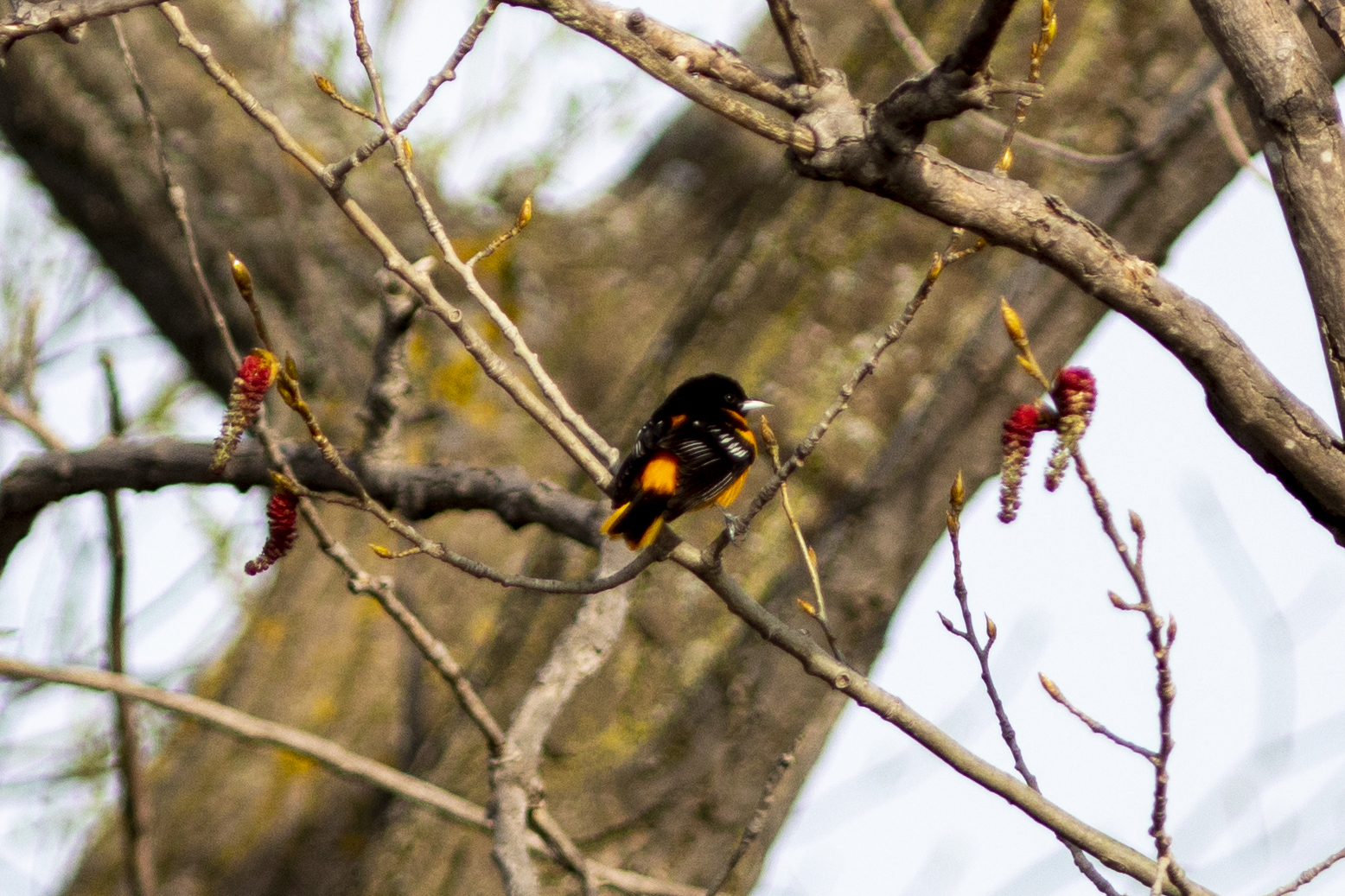
Water determines the Great Lakes Region’s economic future
Climate change, geopolitics and business opportunities power a blue economy
This story is part of Toronto’s Climate Right Now, a collaboration with The Local about vulnerability and adaptation in Canada’s largest city.
On a warm spring day at dawn, passing through Toronto’s Port Lands on the way to Tommy Thompson Park, the first thing you hear is the gulls.
Then the trills of red-winged blackbirds, flashing their crimson and yellow shoulder patches as they swoop over the path. Next, the spritely chirps of sparrows. By the time you enter, golden sunlight is streaming through the trees and the air is humming with the songs of too many birds to count, every branch seemingly alive with wings and feathers. Flocks of cormorants, geese and ducks pass by overhead, silhouetted by the rising sun.
That any of this is here is mostly an accident. The land Tommy Thompson sits on, known as the Leslie Spit, was originally a man-made landfill. But now that it’s here and populated by flora and fauna, it’s become a crucial place for preserving biodiversity in a region with few wild spaces left.
The park is home to protected species and native plants. It’s also an Important Bird Area, a distinction given to sites with special conservation value for key species. Birds are sensitive to the ways habitats change and the same things that can make their populations decline — pollution, climate change, invasive species — can be bad news for human health as well. But even beyond that, Tommy Thompson is a rare chance to make up for some of the ecological damage done by settlers over the past two centuries.



“It’s really evolved into a very special place,” says Tommy Thompson project manager Andrea Chreston. She works for the Toronto and Region Conservation Authority, which is responsible for the park.
“In North America’s fourth largest city, to be able to replace lost habitat, in the place where it was lost originally, is unheard of.”
Tommy Thompson Park lies on a chunk of land known as the Leslie Street Spit, named after the road that ends where it begins, on the east side of downtown. The park juts out five kilometres into Lake Ontario, stretching southwest past the Port Lands and the mouth of the Don River, ending a stone’s throw from the Toronto Islands.

A few hundred years ago, before the Toronto Islands were even islands, the Don River flowed into an enormous marsh of about five square kilometres, teeming with life. It hosted a rich variety of fish and wildlife, filtering the river and absorbing water to naturally mitigate floods. Since time immemorial, the area has been home to many Indigenous nations, including the Mississaugas of the Credit, the Anishnabeg, the Chippewa, the Haudenosaunee and the Wendat peoples.
By the early 1900s, however, settlers were urbanizing the waterfront — which included making it a dumping ground for sewage and manure. The marsh was a stinking mess. In 1911, the Toronto Harbour Commission decided to fill it in.
“It was perceived as wasted space,” Chreston says, adding that early settlers didn’t understand the marsh’s ecological value. “There was nowhere for the wildlife to go anymore.”


In 1959, the St. Lawrence Seaway, a system of channels and locks running from the Great Lakes to the Atlantic Ocean, opened. Toronto was anticipating a shipping boom. The harbour commission made a plan to expand the port and started filling in the lake at the foot of Leslie Street to create a breakwater. Contaminated sand and silt dredged from the bottom of the outer harbour was used to outline lagoons encircled by sandy peninsulas.
Hundreds of trucks per day also brought brick and rubble from demolition sites and construction projects — including material from the building of the subway. Pieces of historic buildings can still be found on the park’s rocky shores. The beaches are scattered with contorted rebar, worn-down ceramic tiles and mysterious stones that, upon closer examination, are really old bricks polished by decades of waves.
The process went on for decades. But the shipping boom never materialized. In the meantime, nature had already staked her claim.
“The birds arrived on their own,” Chreston says. “They were the first ones to use this space.”



Terns, slender seabirds with forked tails, nested on the shoreline. Trees and grasses start to grow. More wildlife moved in over the years, including beavers, turtles and rabbits. In the early ’70s, acknowledging that the breakwater was no longer needed, Ontario tasked the Toronto and Region Conservation Authority with turning the forlorn dumping ground into a park.
Over time, governments wrote new laws to stop polluted material from being dumped into the lake. Tainted sediment from the channel connecting the harbour to the Don River is still dredged out regularly to keep it clear for boats, but now goes into landlocked ponds, called cells, within the park. The Toronto and Region Conservation Authority contained two by covering them with clean material and building functioning wetlands on top. (PortsToronto still disposes of sediment in a third cell.)




The cells — like the rest of the park — are now brimming with life. Native vegetation grows on the shore while swallows dart overhead. Trumpeter swans, their calls sounding like an orchestra struggling to tune instruments, nest on an island. The conservation authority has also installed rafts for common terns to nest on, replicating the shallow, rocky islands they prefer to call home.
It’s not without effort: staff are constantly working to remove invasive species and keep them from coming back. But it’s a functioning ecosystem, not too far from the place where one was destroyed 100 years ago.


At 8 a.m. at the Tommy Thompson Bird Research Station, five people clad in bright orange vests have already been here for a while. Their task is to monitor the songbirds in the park and band some of them with a tiny aluminum cuff, which fits their leg like a bracelet — these are stamped with a unique number to help researchers across North America track their health and where they go, if they’re ever captured again. Some birds are on their way north for the summer, treating the peninsula like a rest stop. Some are settling here to build nests and find mates.
About half an hour before dawn, the team stretches nearly invisible nets across clearings in the woods near the research station. When a bird flies into one, it slides straight into a built-in pouch. Staff and volunteers don’t try to attract birds to the nets, but check them every 30 minutes to see what’s landed on its own. It’s meant to be a passive process, allowing them to see a sample of the species in the area. Nets are open for six hours.



“There’s probably four different sparrow species in one net over there this morning,” remarks Nigel Shaw, a conservation authority staffer who has worked with birds for 40 years, as he walks the length of the net. One by one, he nimbly plucks birds out, transferring them smoothly to soft cotton bags. “Big sparrow day, that’s for sure.”
Handlers like Nigel are trained over many years to safely pull birds out of each net and gently place them in the bags, a dark space where the birds are calm and still. Today, he’s leading four volunteers.







Finally, the handlers weigh the birds by placing them head-first in a small canister, their tiny feet poking out of the top, so they can’t fly off the scale.
“It’s like fishing, catch and release,” Shaw says.
Chreston acknowledges that the process can be stressful for the birds. Who wouldn’t be stressed to have their day interrupted by a net and a series of surprise measurements? But it’s all done in a minute or two, the handlers moving quickly and deftly to keep the creatures comfortable before sending them on their way. Some step outside to set them free, opening their hands so the tiny songbirds can spring out. Others use a tube to the outdoors, installed in the building, lowering their hand into it to allow the bird to pop out.


“The techniques have been developed and are used globally to try and reduce and limit the amount of stress that a bird will feel,” Chreston says.
It’s not just sparrows today. Volunteers have found a bunch of warblers, too — tiny songbirds that fit in the palm of a hand, some so yellow they’re almost fluorescent. Sometimes, the specimens have already been tagged elsewhere, giving clues on the remarkable journey they may have taken to get here. One year, Shaw says, they found a bird that had been banded three weeks earlier in Belize. “It made it straight up the central flyway,” he adds.



In other sections of the park, some of the birds passing through are beloved seasonal guests, like the flashy orange Baltimore oriole and the striking rose-breasted grosbeak. Early-morning birders carrying cameras with long lenses are waiting to see them, eagerly pointing them out to passersby at low volumes, so as not to scare the feathered visitors.
Shaw first got his permit to handle birds when he was 18 years old. He’s been doing this long enough to see trends play out in real time. Some years there are more birds, some years there are less. But even in the best years, there are never as many as there were when he was younger.
“We’re hoping that’s not the trend, but it could be,” he says.


Wild bird populations have declined by about a third across North America since 1970, a loss of about 2.9 billion, a landmark study found in 2019. The study, published in the journal Science, warned that urgent action must be taken to prevent further bird population collapse. Their dwindling numbers are a stark warning. Birds are an indicator species — the ecosystems that sustain them sustain people as well, and their collapse doesn’t bode well for us. The loss of their habitats, along with climate change and other human activity, is contributing to the downward trend. It affects even common birds, like red-wing blackbirds and blue jays.
It’s not always clear where the trouble is for specific bird populations, Chreston says. Some of them have enormous ranges, and that’s why the data collected through observing and banding them is so important. It can help researchers understand the types of habitats birds need at different times of year. “The issue may or may not be here, it could be across the continent or in the wintering grounds,” Chreston adds. The information collected at Tommy Thompson feeds into the Canadian Migration Monitoring Network, which includes 26 stations across the country.
The conservation authority would love to have funding for newer technology, like bird tags that can ping specialized radio towers. It has one of the towers on-site already, recording the presence of birds fitted with the tags elsewhere, but doesn’t have the budget for the tags themselves.




The double-crested cormorants at Tommy Thompson are numerous, but unpopular. They’re not as immediately appealing as the songbirds — their guttural grunts are almost pig-like, sounding like something out of Jurassic Park. They vomit when threatened. Their excrement kills trees, bleaching them white. But cormorants are also a real conservation success story, an example of how spectacularly a bird population can recover when people are willing to put in the effort.
Cormorants nearly disappeared from the Great Lakes region in the 1960s due to the toxic pesticide dichlorodiphenyltrichloroethane — better known as DDT. The chemical had been used to kill mosquitoes transmitting malaria, but it also poisoned the food chain and studies now show it likely causes cancer in humans. DDT also made cormorant eggshells thin, fragile enough to break when the birds sat on them to incubate their chicks. “The population crashed,” Chreston says.
The issue burst into public consciousness in 1962 with the publication of Silent Spring by American biologist Rachel Carson.
“How could intelligent beings seek to control a few unwanted species by a method that contaminated the entire environment and brought the threat of disease and death even to their own kind?” Carson wrote. The book sparked a firestorm of public opposition to the chemical and the beginnings of the modern environmental movement. Eventually, DDT was banned in the United States in 1972 and Canada phased out most uses of it in the mid-’70s, banning it entirely in 1990.
DDT decays slowly, and some of it lingers in the environment to this day. But almost immediately after it was phased out, cormorant populations started to explode. Six pairs nested at Tommy Thompson in 1990. Today, the park is home to the largest breeding colony for double-crested cormorants in North America, with over 10,000 nests there in 2021. A few of the peninsulas in the park are closed off to the public from Apr. 1 to Sept. 1, allowing the birds to breed in peace.



It isn’t always easy to live in harmony with cormorants. At Tommy Thompson, their guano has damaged the tree canopy. Some provincial and national parks have chosen to cull them but the Toronto and Region Conservation Authority has figured out a way to manage without doing so. The trick is to encourage the birds to nest on the ground.
If cormorants try to build a nest in a healthy tree during the breeding season, park staff clad in full protective gear — to guard against vomit and excrement — do their best to deter them. The birds habituate quickly, so staff use escalating methods to keep them away. First they shout and wave their arms. Once that stops working, they poke the nests-in-progress out of the trees with a forestry pole. They might also set off a noise deterrent that sounds like a firework. The process makes ground nesting, or nesting in trees that are already dead, a whole lot more appealing.
This can make nests on the edges of the cormorant colony more vulnerable to predators. But research done at the colony shows ground nests are still more successful and productive than those in trees, Chreston says.
“Ultimately, ground nesting is more sustainable for everybody,” Chreston says. “It’s in our benefit because we maintain the tree canopy. But cormorants are also not losing their habitat.”


During peak migration season, cormorants zoom back and forth with twigs clasped in their beaks, racing to build nests and find mates. Others sun themselves alongside seagulls or circle over the park’s lagoons. Their nests are so close at times, they’re practically beak to beak.
“In about three weeks, it’s going to be in a frenzy because the birds that haven’t already nested are going to be panicking,” Chreston says in early May.
“Then all of a sudden, one day, it just turns off. You’ll come back, say, five weeks from now, and it’ll be super quiet.”
Once chicks hatch, staff leave the cormorants alone. The babies will be ready to fly by August and most of the birds will head for the tropics by early September. For now, the colony feels almost as busy as the city, just a few kilometres away.

Despite the peril faced by wild birds, there are signs of hope — like the cormorants — and so much left that’s worth saving. One of Chreston’s favourite park visitors is the scarlet tanager, a brilliant ruby-coloured bird that sounds sort of like a robin with a smoking habit. “I don’t get them every year,” she says. Only a few come through each spring, and they don’t tend to stay for too long. A colleague stops by the bird research station to tell her about a tanager in the woods nearby, so Chreston heads down the road with a pair of binoculars, eyes trained on the treetops as she listens for the bird’s distinct song.
She finds it, a flash of vermillion in the treetops. “If you look sort of up in the air, you can see the red.”
Updated June 21, 2022, at 5:18 p.m. ET: A previous version of this story misidentified a bird in the process of being banded. It is a goldfinch, not a yellow-rumped warbler.
Get the inside scoop on The Narwhal’s environment and climate reporting by signing up for our free newsletter. On a warm September evening nearly 15...
Continue reading
Climate change, geopolitics and business opportunities power a blue economy

10 billion litres of sewage are dumped into Winnipeg’s lakes and rivers each year. Some...

Court sides with Xatśūll First Nation, temporarily halting Mount Polley mine waste expansion
